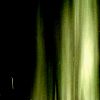Ian Andrews
Video
Transiterations DVD (2007)
Review
Buy DVD
In 2005 I purchased a small 3 chip DV camera. This camera is so small that I can take it everywhere. This has enabled me to capture banal everyday events in an unobtrusive way and still end up with images ofreasonable quality. Catching life unawares has become much easier in recent years, due to the ubiquity of cameras in our publicspaces. Cameras are now ignored more often than not. Much of this activity involved “serial capture,” shooting the same scene over anumber of days.Quite a lot of my previous work has focused on the re-use of “found” material. In some sense I see this work as involving the same principles. I look at this practice more as “field recording” than “shooting.”The shot is basically locked off and the camera records whatever comes into the frame – whatever sound occurs at the time. The pro-filmic eventis, in a sense, “found.”
In editing, small sections of the “recordings” are selected according totheir sound and image qualities (sound in the majority of cases), and arranged and repeated in rhythms. In this way the raw sound is musicated (I specifically listen for subtle melodies in the sound). Since the project is defined by the serial (or iterative) capture of sound and images in transit, and the iterative cutting of sound and image, I have titled it Transiterations. I have tried to steer away from digital manipulation and effect as much as possible. All sounds originate from the pro-filmic event (no extra sounds have been added). Where effects are used they are relatively simple: Equalisation (filtering) on sounds: split screens on images.
I have applied a number of rules or limitations on this project:
- All shots are locked off - no camera movement or zooms.
- No music or sound effects are to be used. Only sound which is recorded with the shot, at the time and place of the pro-filmic event can be used.
- All pro-filmic events are to be everyday and banal. Nothing special or out of the ordinary is to be shot. There is to be no focus on a single individual.
Part of the project then involves finding creative ways to “break” these rules without really breaking them. The locked off shots from moving trains, escalator, and floating platform, give camera movement, the “sound effect” like cacaphony of birds in Park, that sound like they don’treally belong in a city park (they were actually there on the day) appear break the second rule.



